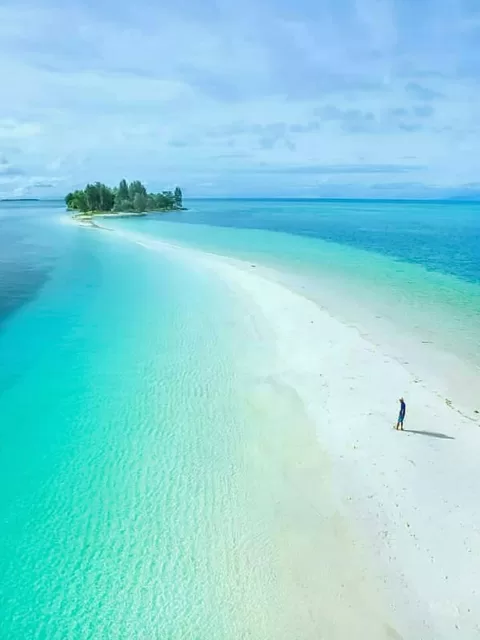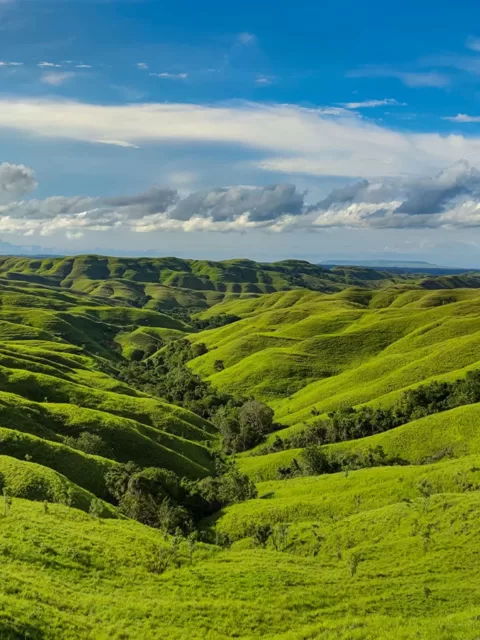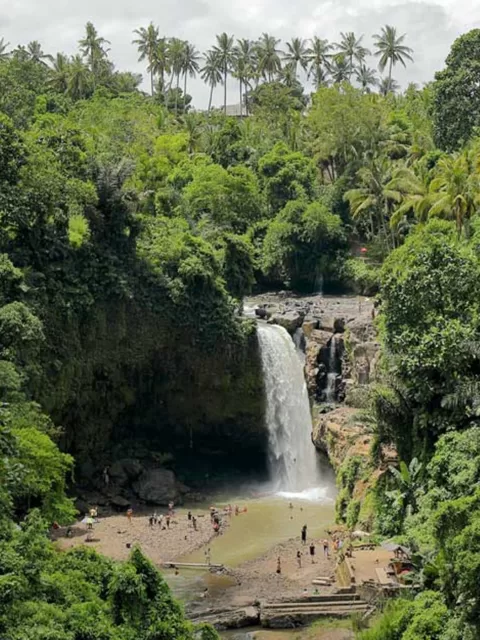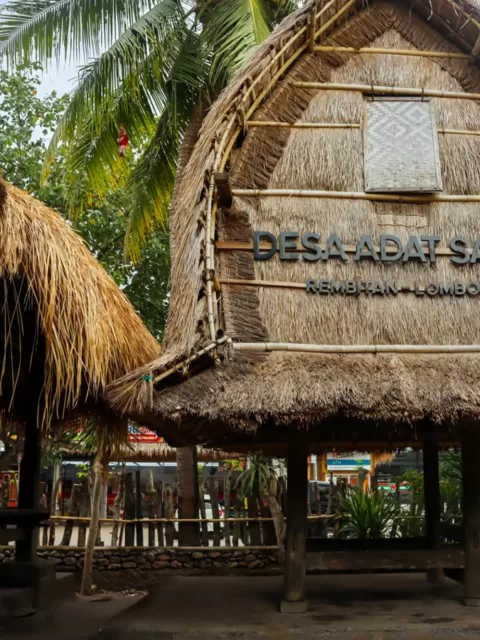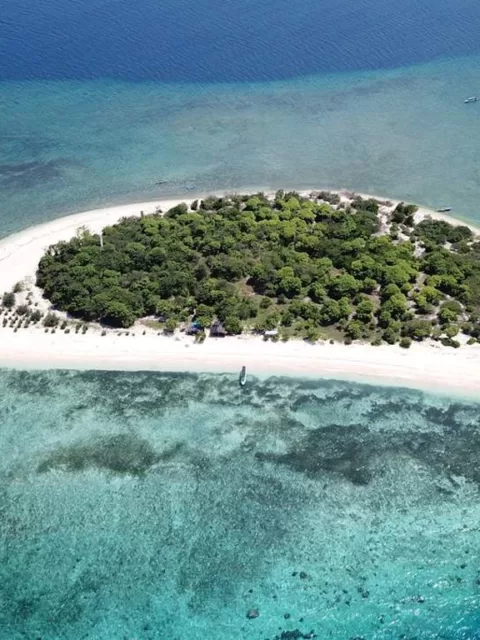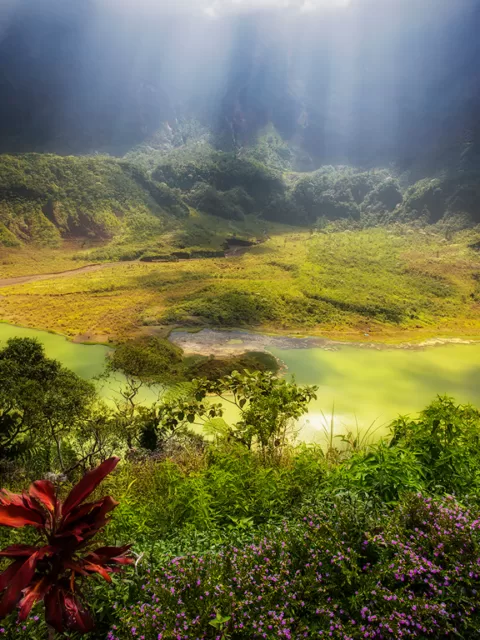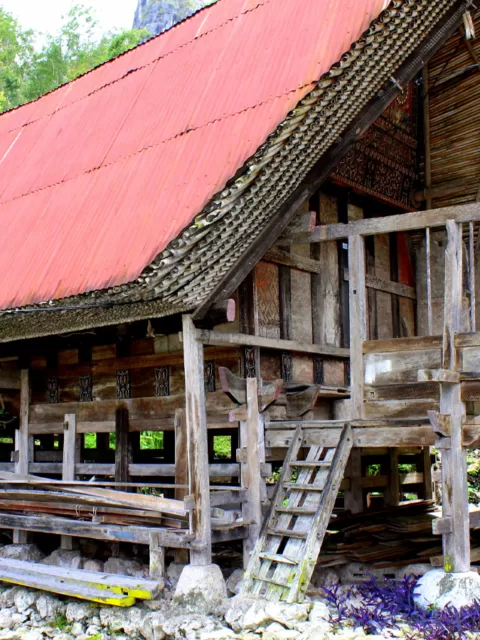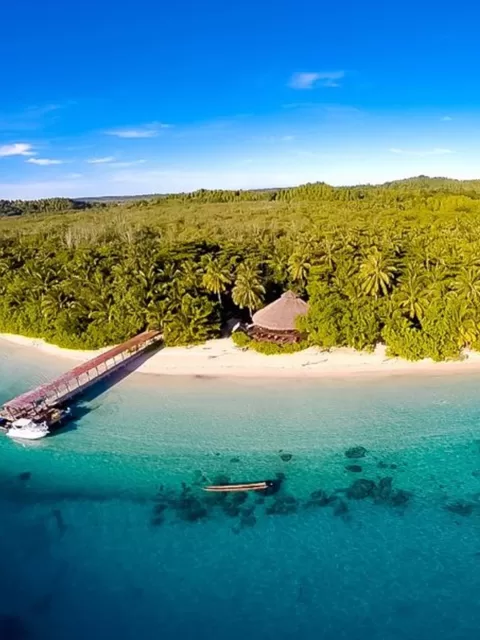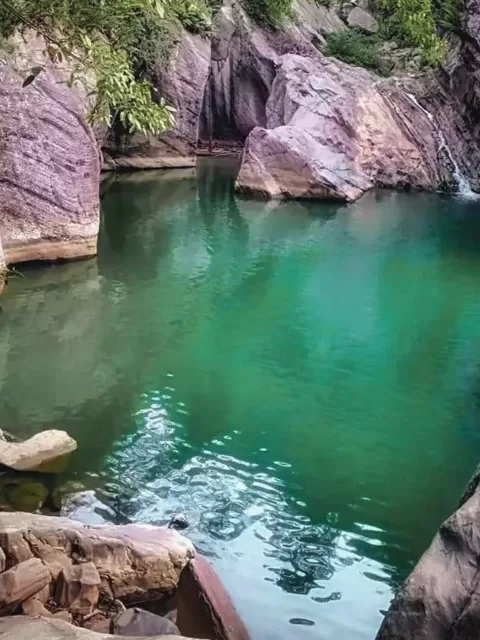Lake Linow in North Sulawesi: Nature’s Colorful Palette
Nestled amidst the lush landscapes of North Sulawesi, Indonesia, is a hidden gem of remarkable beauty and wonder: Lake Linow. As you embark on this journey, we invite you to step into the vibrant world of Lake Linow, a natural masterpiece known for its ever-changing, vibrant colors. In this exploration, we will uncover the geological mysteries and ecological marvels that give birth to this kaleidoscope of hues. Lake Linow is not just a body of water; it is a living canvas, a testament to nature’s boundless creativity.
The Geography and Formation of Lake Linow
The Natural Setting of Lake Linow in North Sulawesi
Lake Linow is situated in the Tomohon region of North Sulawesi, a province known for its breathtaking landscapes and rich biodiversity. This freshwater lake, although relatively small, is famous for its exceptional geological characteristics. It is surrounded by dense rainforests, offering a serene and picturesque setting for visitors.
The Geological and Ecological Factors that Create Its Colors
What sets Linow apart is its remarkable ability to change colors, shifting between shades of green, blue, and even red. This metamorphosis is not a result of magic but of geological and ecological factors at play. The lake’s colors are influenced by volcanic activity, mineral deposits, and microorganisms living within its waters. Understanding these factors is key to unraveling the mysteries of Lake Linow’s vibrant palette.

Understanding the Unique Formation of the Lake
Lake Linow’s geological history is tied to the nearby Lokon-Empung volcano. The lake occupies a crater formed by past eruptions, making it a maar lake. Maar lakes, born from volcanic explosions, often exhibit unique characteristics due to their geological origins. Lake Linow’s intriguing formation is central to the narrative of its colors and ecological diversity.
A Kaleidoscope of Colors
The Striking Hues of Lake Linow and Their Seasonal Changes
The colors of the lake are a source of constant fascination. Depending on the time of day, weather conditions, and even the seasons, the lake’s water transforms from one shade to another. It may glisten with emerald greens in the morning, only to turn cobalt blue in the afternoon. These ever-changing colors paint a dynamic portrait of nature’s beauty.
The Role of Microorganisms and Minerals in Coloration
One of the key actors in Lake Linow’s color-changing drama is the presence of unique microorganisms. These tiny organisms, such as algae and sulfur bacteria, play a crucial role in coloration. In addition to microorganisms, mineral deposits in the lake bed contribute to the vibrant hues. Sulfur, for instance, creates the rusty red tones observed in certain areas of the lake.

The Cultural and Ecological Significance of the Colors
Lake Linow’s colors are not merely a visual spectacle; they hold cultural and ecological significance. The changing hues are often interpreted by local communities as omens or indicators of natural events. Ecologically, the lake’s colors reveal the presence of specific microorganisms and help scientists understand the lake’s evolving ecosystem.
Flora and Fauna Surrounding Lake Linow
The Biodiversity of the Lake’s Ecosystem
The aquatic ecosystem of Lake Linow is a thriving world of flora and fauna. The lake’s waters host a variety of plant and animal species, each adapted to the changing conditions. Aquatic plants, such as water lilies and submerged vegetation, provide a habitat for numerous aquatic creatures. Fish species, including tilapia, can be found in abundance, sustaining both the lake’s ecosystem and the local communities.
Unique Plant and Animal Species Found in the Area
Lake Linow’s surroundings are not only home to aquatic life but also to a diversity of plant and animal species. The adjacent rainforests are teeming with wildlife, including various bird species, insects, and small mammals. Exploring the forested areas around the lake is an opportunity to encounter unique and endemic species that thrive in this remarkable environment.
The Delicate Balance of Life Around Lake Linow
Lake Linow’s ecosystem is delicately balanced, and the local communities understand the importance of preserving this harmony. The lake provides resources for both sustenance and livelihoods. Sustainable practices and conservation efforts are essential to maintaining the well-being of the ecosystem and ensuring that Lake Linow continues to enchant generations to come.
Visiting Lake Linow: Practical Information
How to Reach Lake Linow in North Sulawesi
Reaching Lake Linow is relatively accessible from Manado, the provincial capital of North Sulawesi. Visitors can choose to hire local transportation, join guided tours, or rent a private vehicle. The journey to Lake Linow offers picturesque views of the North Sulawesi countryside, making the trip itself an enriching experience.
Entrance Fees, Visiting Hours, and Guided Tours
Lake Linow is open to visitors for a nominal entrance fee. The best time to visit is during daylight hours when the colors of the lake are most vivid. Guided tours are available for those seeking a deeper understanding of the lake’s geology, ecology, and cultural significance. Knowledgeable guides can provide insights into the lake’s unique attributes.

Tips for a Memorable and Responsible Visit
Responsible tourism is crucial to preserving the natural beauty of Lake Linow. Visitors are encouraged to respect the environment and follow guidelines for eco-friendly exploration. It’s important to take only memories and leave only footprints. Additionally, supporting local communities through responsible tourism initiatives contributes to the sustainability of the area.
Cultural and Environmental Significance
The Place of Lake Linow in Local Culture and Traditions
Lake Linow holds a special place in the cultural heritage of North Sulawesi’s communities. The lake’s ever-changing colors are often interpreted as messages from the spiritual world. Ceremonies and rituals are held on its shores, emphasizing the interconnectedness of nature, culture, and spirituality.
Conservation Efforts and Protection of the Lake
Preserving Lake Linow’s unique ecosystem is a shared responsibility. Local organizations and conservation initiatives work tirelessly to protect the lake from pollution and habitat degradation. These efforts aim to maintain the ecological balance and ensure that future generations can continue to witness the marvel of Lake Linow.
The Interaction Between the Community and the Natural Wonder
Lake Linow is not just a geological marvel; it’s a living part of the local communities’ lives. Fishing, farming, and tourism provide livelihoods for many families in the area. The lake’s waters sustain both the ecosystem and the well-being of those who call this region home. The interaction between the community and the natural wonder exemplifies the delicate harmony between human activities and nature’s wonders.
Final Thoughts
In conclusion, Lake Linow in North Sulawesi stands as a testament to the awe-inspiring beauty and diversity of the natural world. Its ever-changing colors, influenced by geological forces, microorganisms, and ecological factors, create a living canvas that captivates all who visit. Beyond its striking palette, Lake Linow is a thriving ecosystem, home to a wealth of plant and animal species.
Visitors to Lake Linow are encouraged to explore this natural wonder with reverence, following responsible tourism practices. The lake’s cultural significance and ecological importance underscore the need for its conservation and protection. As we conclude our journey, we extend an invitation to all to witness the vibrant spectacle of Lake Linow and engage with the local communities who cherish this remarkable part of North Sulawesi. Lake Linow is more than a destination; it is a living masterpiece of nature, awaiting discovery and appreciation.



